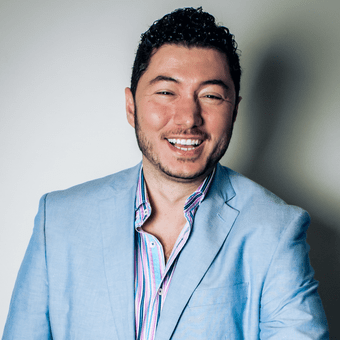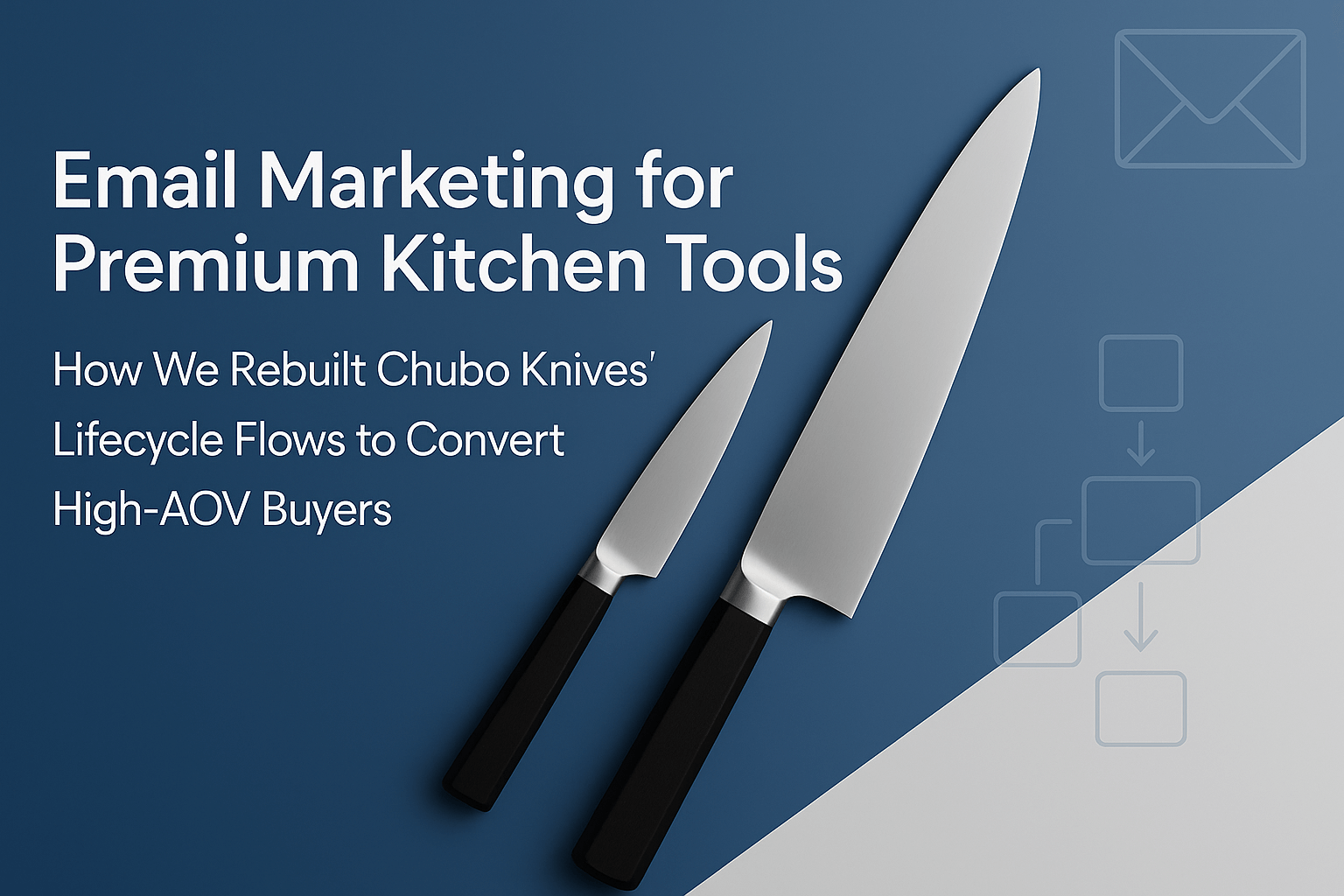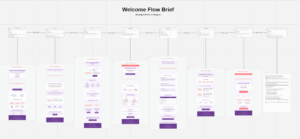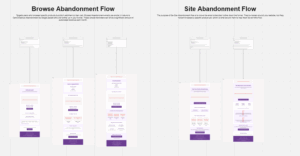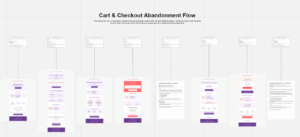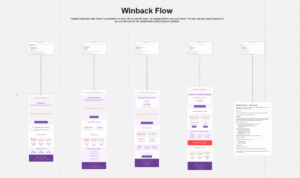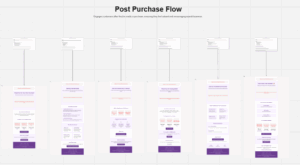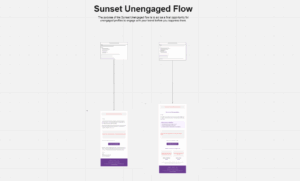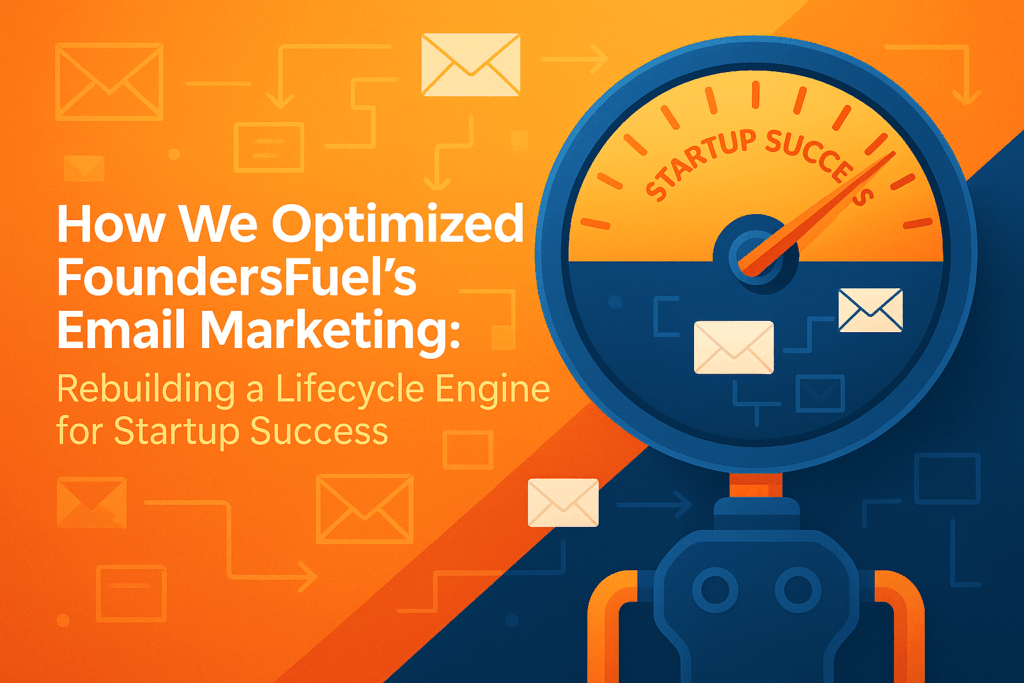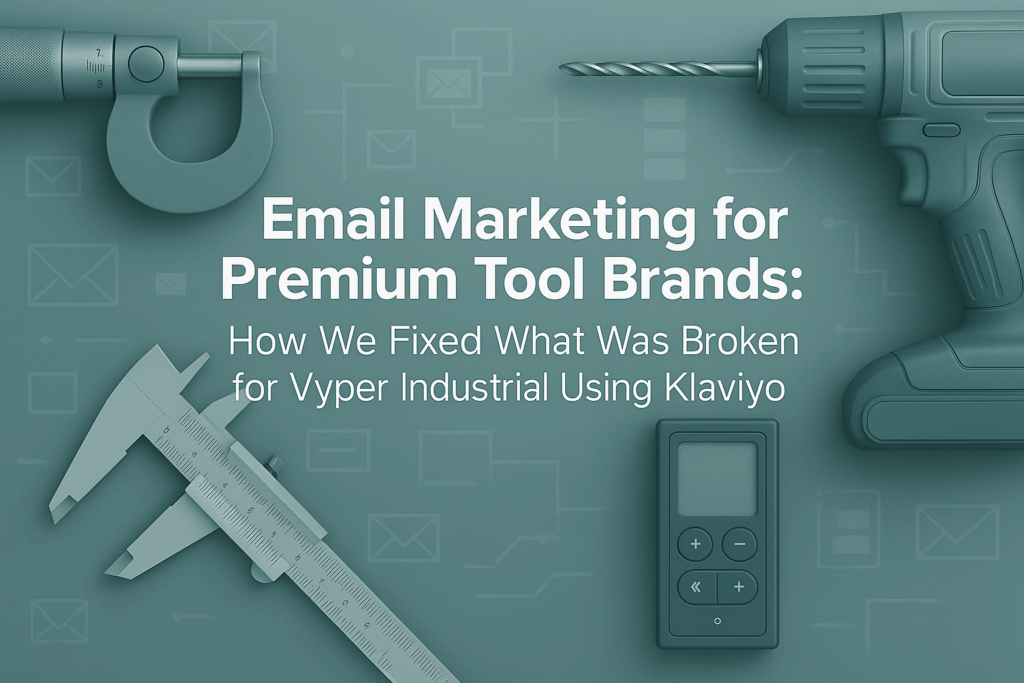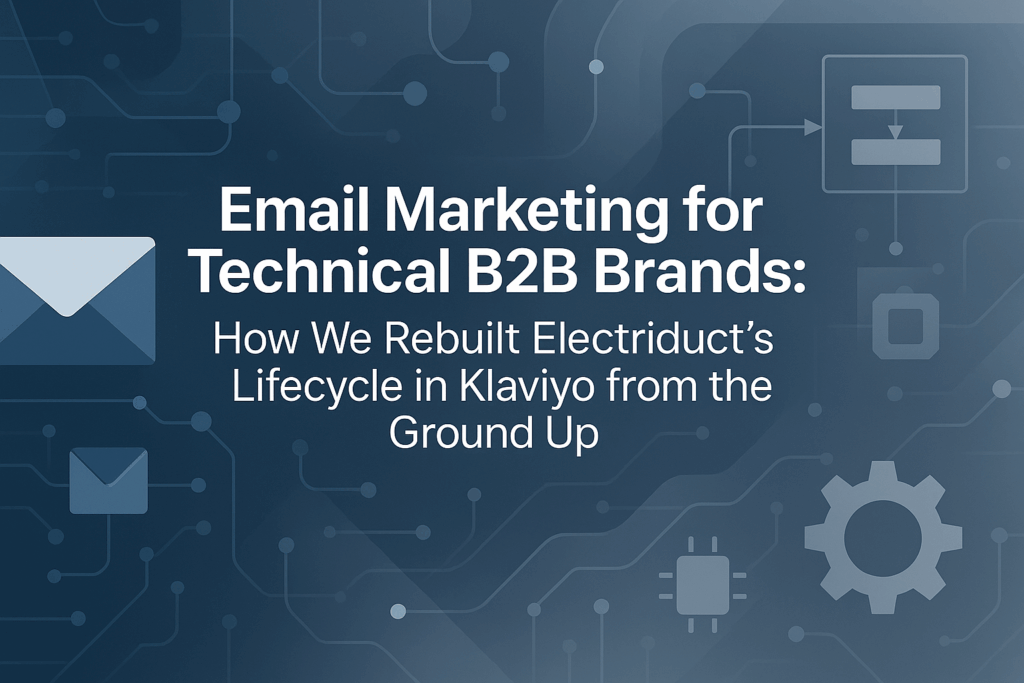When your brand is rooted in centuries of Japanese tradition, every customer touchpoint should echo that same level of precision and care.
That was the challenge we took on with Chubo Knives.
Founded in 2012 by Jeremy Watson, whose career in Japanese culinary tools spans more than 20 years, Chubo Knives has carved out a distinctive spot in the world of professional cutlery. Their hand-forged knives are crafted by master blacksmiths in Japan using high-carbon stainless steel. These aren’t gadgets or generic kitchen tools—they’re legacy instruments trusted by chefs in some of the world’s most demanding kitchens.
With prices ranging from $150 to $500 per knife, Chubo doesn’t play in the volume game. Their customer isn’t looking for a deal—they’re looking for a tool that will elevate their craft.
But the email marketing didn’t reflect that.
The online experience didn’t match the offline quality. Despite selling tools that chefs are proud to display and use every day, their email system felt disconnected—more like a standard ecommerce workflow than the digital extension of an artisan brand.
So we asked, if the blade is handmade with care, shouldn’t the email experience be designed with the same intention?
The Challenge
Chubo’s email program had a few major issues—none of which were unique to them, but all of which were costing them conversions and long-term loyalty.
1. Storytelling was muted. The rich legacy behind their products—hand-forged steel, intergenerational craftsmanship, blacksmith partnerships—wasn’t coming through.
2. The structure of their flows wasn’t working. The sequence of emails didn’t guide customers through a high-consideration buying journey.
3. Messaging was flat. Their emails didn’t reflect the premium tone of their product, and felt overly templated.
4. Segmentation didn’t exist. First-time home cooks, culinary students, and professional chefs all got the same message.
5. Retention? Almost nonexistent. No strategic flows to nurture repeat buyers or upsell complementary tools.
When your knives are sold based on performance, story, and pride of ownership, these types of email issues become more than just minor inefficiencies—they become revenue leaks. And more importantly, they weaken the brand relationship.
Understanding the Company’s Mission
Before we built a single email, we had to get grounded in what makes Chubo… Chubo.
This isn’t just a knife brand—it’s a bridge. Between centuries-old forging traditions in Japan and the chefs rewriting the rules in kitchens around the world. Between ritual and performance. Between tool and art.
Chubo doesn’t just sell knives. They carry stories—passed down through generations, folded into steel, and finished by hand. Every blade is a piece of legacy, built to perform under pressure, yet designed with reverence.
We wanted that to come through in every flow—not with fluff, but with clarity. Education was key: breaking down knife types, when to use what, and how to care for a blade built to last. These emails became small lessons in good judgment.
Prestige, too, played a quiet role. Chubo doesn’t scream luxury. It earns it—through chef testimonials, behind-the-scenes stories, and a tone that leads with confidence, not hype.
Heritage. Performance. Craft. The whole system—seven flows, thirty-four emails—was designed to carry those values forward. Thoughtfully. Precisely. Like the knives themselves.
Welcome Flow Optimization
When someone joins Chubo’s list, they’re not just window shopping—they’re looking for something lasting. Maybe it’s their first Japanese knife. Maybe they’ve been cooking for years but want to invest in tools that match their skill. Either way, they need more than a discount. They need guidance. That’s why this eight-part welcome journey wasn’t a pitch—it was an education. One thoughtful, well-paced introduction to the world of handcrafted blades.
1. A Proper Introduction
We opened with quiet confidence. Instead of leading with the offer, we led with a scene: a blacksmith in his forge, hammer poised mid-swing. The email welcomed subscribers into the Chubo world by grounding them in what truly sets the brand apart—heritage, precision, and purpose. The welcome discount was there, just below the fold, offered without urgency. We paired it with a short, curated lineup of bestselling knives and a few words on what makes each one unique. Testimonials from trusted chefs added credibility without fanfare.
2. Meet the Founder
Next, we introduced Jeremy Watson—not through a polished headshot, but through real stories. His path wasn’t corporate. It started in kitchens, stretched through quiet Japanese towns, and led to deep collaborations with master blacksmiths. This email offered a rare look into how Chubo came to be: built on respect, not just for the craft, but for the people behind it. The message was simple—this isn’t just a brand. It’s a relationship.
3. A Guide to Japanese Knife Types
We stepped into education mode without sounding like a manual. From Gyuto to Santoku, Nakiri to Petty, each knife was broken down with clarity: what it’s made for, how it feels in the hand, and who typically reaches for it. We skipped the jargon and focused on utility. Clean visuals. Motion. A few confident CTAs to help people explore what fits their kitchen best.
4. Why Chubo Is Different
At this point, customers had seen the knives, but now they needed to understand what made them different. We unpacked the details: high-carbon stainless steel, forging techniques, geometry, balance. Through close-up imagery and storytelling, we helped them connect the dots between old-world processes and real-world performance. This wasn’t about marketing claims. It was about why these tools outperform and outlast.
5. The Tools of the Trade
We let the users do the talking. This email was all about real stories—quotes from chefs and home cooks who brought Chubo into their kitchens. A sushi chef talking about balance. A side-by-side photo showing how a Chubo knife holds up next to a worn-out mass-market blade. This wasn’t persuasion. It was proof.
6. The Essential Knife Set
For those ready to go deeper, we offered a gentle primer on building out a complete station. Why a Gyuto is the go-to. How a Nakiri or Petty complements it. Visual guides walked through common combinations, showing what each knife adds. This wasn’t upselling—it was setting people up for long-term success in the kitchen.
7. The Specialty Tools
This was for the more advanced cooks. Sujihiki for carving, Deba for breaking down fish. We brought in chef videos, technique tips, and care instructions. For those who already had their daily driver, this email expanded their perspective—how the right tool could elevate specific tasks and open up new skills.
8. A Gentle Nudge
The series closed with warmth, not pressure. A reminder that their 10% offer was about to expire—but also a simple offer of help. “Not sure what to choose? Just hit reply.” A short note from the founder closed it out. The message was less “buy now,” more “we’re here when you’re ready.”
Why This Flow Works
This welcome flow does what most don’t: it educates before it sells. Every message is built on a single truth—people don’t buy premium knives on impulse. They buy when they understand. We use narrative structure, beautiful design, and precise copy to move someone from casual curiosity to confident investment. By the time the discount offer arrives at the end, it’s no longer a bribe—it’s an easy “yes” for someone who already feels informed, inspired, and taken seriously.
Abandonment Flows Optimization
A customer browses a premium knife brand like Chubo, lingers on a product, maybe even adds it to their cart, then leaves. It happens more often than not. But the silence that follows doesn’t have to mean a lost sale. For a product that costs hundreds and invites long-term use, hesitation is part of the process. These flows were designed not to chase, but to reassure. They answered questions, removed friction, and guided prospects back when they were ready, with clarity, patience, and tact.
Site Abandonment Flow (2 Emails)
1: “Still Thinking About That Perfect Knife?”
Reintroduce Chubo to top-of-funnel browsers and gently guide them deeper into exploration. This first email wasn’t designed to close a sale. It was designed to show up like a helpful guide who remembered your name. The subject line was soft. Inside, a header photo showed a beautifully plated dish mid-prep, a Chubo knife in hand—implying intention, not promotion. We acknowledged their recent visit and offered a curated breakdown of knife categories (Chef’s, Vegetable, Utility, etc.) tailored to their browsing behavior.
Educational snippets answered early questions like “What’s the difference between a Gyuto and a Santoku?” or “What makes a Japanese edge unique?” The tone stayed high-touch and non-intrusive—inviting the reader to reengage with the collection on their own terms.
2: “Finding the Right Knife for Your Style”
Provide decision support through a guided comparison and real-user examples. This second touchpoint was framed like a recommendation, not a reminder. We opened with a short note: “Still thinking it over? Let’s make the decision easier.” From there, we introduced a clean visual comparison chart breaking down the most commonly browsed knife types. Each section featured: what it’s best at, who it’s ideal for, and the most common pairing knife customers added next.
We layered in a short chef testimonial at the bottom—a sushi chef describing the moment she switched from Western knives to Japanese steel and never looked back. The CTA wasn’t “Buy Now.” It was “Compare Knives.” Because at this point in the journey, it’s not about closing—it’s about confidence.
Browse Abandonment Flow (3 Emails)
1: “Still Considering the ?”
The first email in the browse abandonment flow brought the customer right back to the product they had viewed—with no distractions. We opened with a clean, full-width photo of the knife they had considered, followed by a conversational reminder of what made it special. Instead of technical jargon, we explained the forging lineage, high-carbon steel, everyday balance, and professional credibility in plain, confident language. We ended by suggesting two similar knives others often explore, offering guidance without pressure.
2: “What the Pros Say About ”
A few days later, the second email let the pros weigh in. We featured short, authentic quotes from chefs who use the knife daily, sharing why it earns a place on their line. A quick video gave customers a glimpse into how the blade performs under real prep conditions. Below that, we preemptively answered common questions about edge retention, value, and how it compares to Western-style knives. No sales talk—just facts, clearly explained.
3: “Need Help Deciding?”
The final email took a softer, more human approach. It arrived as a simple message from Chubo’s support team, asking if they needed help deciding. We mentioned the kinds of questions other customers often ask—what to buy first, whether a sharpening stone is necessary, how to round out a home kit. We invited them to reply directly for personalized recommendations, and quietly reminded them that shipping would be free if they ordered within the week. It was never about the hard sell—it was about meeting them where they were.
Why This Flow Works
This abandonment flow doesn’t assume hesitation is a problem — it recognizes it as part of the process. Instead of pushing urgency, it gives the customer room to evaluate, compare, and come back on their own terms. Each email offers just enough clarity to move things forward: tailored recommendations based on actual browsing behavior, thoughtful product education that removes friction, and language that respects the buyer’s pace. There are no gimmicks here — just quiet confidence. This is how a premium brand shows up: helpful, steady, and intentional. Even if the purchase doesn’t happen right away, the relationship remains intact — and stronger for it.
Cart & Checkout Flow Optimization
Abandoning a cart doesn’t always mean losing a customer—especially not for a product as high-consideration as a handcrafted Japanese knife. Sometimes, they’re just waiting for the right reason to follow through. In Chubo’s case, our cart recovery emails weren’t there to nudge. They were there to reaffirm that their choice was the right one, the craftsmanship was worth it, and the support was ready when they were.
We designed an 8-email sequence built around trust, reassurance, and gentle momentum, not discounts or pressure. Here’s how we brought it to life:
1: “Still in Your Cart—A Knife Worth Waiting For”
A gentle reminder and reassurance, without urgency or pressure. This first email was intentionally minimal. No countdown clocks. No “don’t miss out” language. Just a clean reminder that their cart still held the knife they chose—and that Chubo was holding it for them.
We featured a hero image of the knife they selected, styled on a wooden cutting board with subtle backlighting. Below, a recap of key specs: weight, balance, steel type, and intended use. We linked directly to FAQs about shipping, returns, and knife care to proactively reduce any last-minute uncertainty.
And we closed with a human line: “Still deciding? We’re happy to help.” Plus a “Return to Cart” CTA in Chubo’s soft gray palette.
2: “Why Chefs Choose the ”
Reinforce value and performance with expert storytellin. Now that the customer had taken some space, we stepped back in—not with a deal, but with a deeper why.
We led with a photo of the knife in use at a Michelin-starred restaurant, followed by a testimonial: “I’ve used dozens of knives in 15 years of cooking. This one changed my prep rhythm overnight.”
Then we broke down what makes this knife special:
- Hand-forged by artisans in Tosa or Sakai
- Edge angle for precision tasks
- Comfort grip for long prep shifts
- Designed for lifetime performance
It wasn’t a pitch. It was a love letter to craftsmanship—and a reminder of what they’d nearly said yes to.
3: “Meet the Blacksmith Behind Your Knife”
Rebuild emotional connection by highlighting the artisan story. At this point, we took a risk—but one that paid off. We introduced the actual blacksmith who forged the knife they’d added to cart (when applicable). His name, his lineage, a photo in his workshop, and a short quote about his craft.
We explained how the steel was folded, how long it took to cool, and how each handle was hand-fitted to create balance.
We closed with: “This isn’t a factory item. It’s a story you can use every day.” With a CTA: “Bring it home.”
4: “What to Pair With Your Knife”
Suggest complementary items while creating added value. Rather than pushing the original item harder, this email pivoted slightly: “If you’re still considering your Chubo knife, here’s what else our customers love with it.”
We featured:
- Hinoki wood cutting board (anti-microbial, doesn’t dull blade)
- Whetstone sharpener
- Knife guard for storage
- Apron collaboration with a top chef
Each item included a 1–2 sentence explanation of why it improves the knife’s longevity or use. It created perceived value—without needing a price cut.
5: “From Japan, With Precision”
This email removed all friction. We featured a short behind-the-scenes clip showing how each knife is inspected, packed, and wrapped in Chubo’s traditional paper.
We reinforced:
- Free shipping over $100
- 30-day satisfaction guarantee
- Email and phone support availability
- Knife-care guide included in every box
Then we added a simple CTA: “Complete your order, and we’ll prepare it with care.”
6: “Don’t Just Take Our Word For It…”
Now it was time to let others speak. We gathered three customer stories, each told in short paragraphs:
- A sous-chef who upgraded to Chubo and cut his prep time by 30%
- A home cook who gifted one to her husband and now uses it herself
- A culinary student who said it helped her win her internship
We included a quote beneath each and a “View the Knife Again” button under each story. It was less “Buy now” and more “Here’s how others felt when they did.”
7: “Your Knife Is Almost Ready”
This email let them know: their cart would be cleared soon. It wasn’t a gimmick—it was simply a respectful timeline.
We summarized the key reasons people love this knife and added:
- “We’re holding your spot for 3 more days.”
- “We won’t send another reminder after this.”
We finished with a soft CTA: “Ready when you are.”
8: “A Personal Note From Our Founder”
This was the most human email of all. It came from Jeremy, Chubo’s founder, written in plain text and signed off personally.
The message read:
“I saw you had your eye on one of our knives. I just wanted to say: if you ever have a question about which blade suits your kitchen best, reach out. We’re proud of what we make, and we want you to feel proud owning it. No rush—just let us know if we can help.”
There was no link, no offer—just a reply button. And that was intentional.
Why This Flow Works
This cart sequence doesn’t see an abandoned checkout as a failure — it sees it as unfinished trust. Every touchpoint is designed to earn the customer’s confidence back, not with discounts or deadlines, but with thoughtful reassurance. We surface the right product details at the right time, offer accessories that add real value, and handle objections before they turn into regret. There’s subtle urgency, but no shouting. Instead of resorting to sales tricks, we reinforce the product’s worth through story, clarity, and precision. And we close the sequence with a real voice — not automation. For a brand like Chubo, where quality and care go hand in hand, that kind of recovery isn’t just smart — it’s part of the promise.
Winback Flow: Reconnecting with Craft-Loving Customers
For a brand like Chubo Knives, the first purchase isn’t the end of the story—it’s chapter one. Many customers come in for a single Gyuto or Santoku, fall in love with the performance, and then… get busy. The excitement fades as life moves fast. The Winback Flow is designed to gently reenter that space and re-spark a feeling—curiosity, respect, aspiration—without shouting. It’s about reminding people why they invested in quality in the first place, and helping them see what comes next.
1: New Blades. New Stories.
Sent 120 days after the customer’s last purchase, this email opened the door with intrigue, not pressure. “We’ve been busy in the workshop,” the subject line teased—then unfolded into a showcase of what’s new: limited runs, seasonal blades, subtle refinements from blacksmiths they may not have heard of yet. We highlighted a few standout pieces—like the new Hitachi Blue #2 Petty, or a rare Kurouchi-finished Nakiri—and told a short story behind each. Nothing flashy, just real details for people who appreciate the nuance. We didn’t lead with a discount. We led with care. The CTA? “See what’s new.” That’s it. An open invitation for the curious to return.
2: Keeping Your Edge Sharp
Seven days later, we reached back—not with a pitch, but with something useful. A care guide tailored to the knife they purchased. It included reminders on proper cleaning (never the dishwasher), how often to hone versus sharpen, and when it might be time for a whetstone. Embedded was a quiet offer: a restock of Japanese-made sharpening stones, camellia oil, and hand-finished cutting boards designed to extend blade life. But we weren’t selling products—we were giving customers a reason to pick up their knife again, to feel its weight and purpose. The tone was service-first, not salesy. Because if someone cares enough to buy a handcrafted knife, they’ll care about keeping it sharp. We just reminded them how.
3: Techniques Worth Mastering
By this point—about two weeks into the winback journey—we wanted to deepen the relationship with something richer: content that teaches. This email featured a technique spotlight from one of our chef partners: a Michelin-starred chef walking through katsuramuki—the Japanese rotary peel. Why? Because it’s mesmerizing to watch. Because it demonstrates knife balance, blade geometry, and user control. Because it reminds the reader: this isn’t just a tool, it’s a craft. Underneath the video, we offered guidance on which knife types pair best with that technique, like the Sujihiki or Petty, but only as suggestions—not a hard push. This was about sparking pride in ownership and giving them a reason to practice. To feel part of something elevated.
4: A Quiet Thank You
Three weeks after their last engagement, this email arrived like a handwritten note in the mail. No hero image. No long scroll. Just a sincere thank-you for supporting traditional knife-making. We acknowledged the craftsmanship behind each blade and the values that both Chubo and the customer clearly shared: an appreciation for quality, patience, and legacy. We enclosed a small gift—10% off any follow-up purchase. But we didn’t frame it as an “offer.” We called it a gesture. Because at this stage in the journey, a customer isn’t looking for a deal—they’re looking to feel seen.
5: A Personal Note from Jeremy
Five days after the thank-you, we closed the sequence with a plain-text note from Chubo’s founder. The subject line was simple: “Just checking in.” Inside, Jeremy asked how the knife was holding up and whether there were any questions or issues. He acknowledged that many customers start with one knife and eventually want to round out their set, but said that whether they were ready or not, the team was here to help. There was no offer, no hard CTA. Just a reply-to-this-email button. The kind you only send when you expect someone to write back.
Why This Flow Works
This winback flow doesn’t force a comeback — it invites one, quietly and thoughtfully. It reconnects with customers not through promotions or pressure, but through story, usefulness, and care. Every message reflects a simple belief: that silence isn’t rejection, it’s a pause — and when we re-enter with relevance, people listen. The tone is personal, not performative. Messaging is shaped by what each customer originally bought, which means no filler — just well-timed reminders that the brand still sees them. No hype. No “where have you been?” guilt. Just authentic nudges wrapped in founder voice and quiet hospitality. That’s how you rebuild trust — and re-open the door with grace.
Post-Purchase Flow: Elevating the Ownership Experience
Chubo doesn’t just sell knives — they sell an experience. That experience shouldn’t peak at checkout. If anything, that’s where it begins. These six post-purchase emails are designed to honor the customer’s decision, reduce buyer hesitation, teach proper use and care, and slowly plant the seed for what’s next. We’re not rushing into upsells — we’re reinforcing pride of ownership and building habits that tie the customer emotionally to their purchase. And we do it all with a steady, deliberate pace.
1: Your Order, Confirmed and Honored
Sent immediately after purchase, this confirmation email does more than check a transactional box. We leaned into premium tone from the very first sentence: “Thank you for choosing a tool crafted with intention, not mass production.” The order details followed, styled cleanly with images of the exact products they purchased. Below, we shared what to expect next — shipping timelines, packaging notes, and a brief message on how every knife is inspected before it leaves our warehouse. We closed with a message from Jeremy: a one-liner about what it means to send these knives into new kitchens around the world. No upsell. Just a pause, and a bow.
2: Prepare Your Kitchen for a New Ritual
Landing in the inbox the next day, this email was a bridge between anticipation and readiness. “Your knife is nearly on its way,” we wrote — but we didn’t focus on logistics. Instead, we guided them through preparation. Which cutting board will give you the cleanest edge over time? Where should the knife live (hint: not jumbled in a drawer)? How do you clean it after every use? With clean design and thoughtful language, we gave them the prep checklist they didn’t know they needed. Embedded inside were subtle introductions to accessories — a Hinoki wood board, a handcrafted Saya cover, a bottle of camellia oil — but they were presented as enhancements to care, not add-ons.
3: Your Knife Has Shipped — Here’s What to Know
The shipment notification wasn’t a bland tracking update. We used it as a moment to further elevate the ownership experience. The email featured a bold, elegant hero image of the knife being packaged, followed by the tracking link. Then came the heart: a care guide PDF, a video showing how to safely unbox and test the edge, and a link to the origin story of their knife — where it was forged, by whom, and what makes this particular steel blend special. This email reinforced value before the box even arrived, making sure the first interaction would be one of respect, not hesitation.
4: How’s It Holding Up?
A week after delivery, we checked in. This wasn’t a NPS request or product review prompt. Instead, it opened with: “Have you used it yet?” We invited customers to reply — to tell us what they cooked first, to ask about sharpening, to show us their setup. We included a soft prompt to submit photos to our community gallery and gently reintroduced educational content about how to get the most out of their blade. We also invited them to reach out with any concerns. If something didn’t feel right, we wanted to hear it — not sweep it under the rug with automation.
5: What Complements Your Knife?
By now, they’ve had their knife in hand for two weeks. That’s when this email dropped, introducing natural next-step products—not as a pitch, but as a path. We framed it around intention: “If your Gyuto has changed the way you slice, the Nakiri will change the way you prep.” Each recommendation was personalized by product type, and paired with commentary from chefs who use that knife combination in their own kitchens. We highlighted functional differences, not marketing fluff, and emphasized why serious cooks build collections over time — not all at once.
6: Join the Circle
Thirty days in, we extended a deeper invitation: to be part of the Chubo inner circle. This email spotlighted stories from other customers, showed photos of knives in real kitchens, and teased upcoming limited releases. It featured no CTAs to purchase — just “Follow us on Instagram” and “Reply to share your story.” We included a short thank-you note from Jeremy at the end, referencing how far a knife like this travels to get to a new kitchen — and how that journey only makes sense when it becomes part of someone’s daily rhythm.
Why This Flow Works
This post-purchase flow is about more than reassurance — it’s about reinforcement. It helps customers feel proud of what they bought, long after they’ve clicked “place order.” Every touchpoint is designed to reduce friction before it happens: setup tips before they’re needed, care guides that feel like welcome gifts, and education that reads like conversation, not instruction. The founder’s voice shows up at the right moments — not as a gimmick, but as a genuine sign that someone’s behind the product, standing by it. It’s not about pushing for the next sale. It’s about showing how ownership can evolve — from a single tool to a deeper relationship. That’s what turns one purchase into a lifetime of loyalty.
Sunset Flow: Parting With Grace
Even the best email programs have to say goodbye sometimes. But for a premium brand like Chubo Knives, that goodbye should still feel like it came from a place of care. Our Sunset Flow was built to serve two equally important purposes: protect list hygiene, and reinforce brand perception, even in exit.
These subscribers had shown no signs of engagement for 6+ months. Instead of flooding their inbox with offers or begging for attention, we sent two thoughtfully paced emails — each giving them clear, respectful choices.
1: Still With Us?
The first message opened plainly and warmly: “We’ve noticed it’s been a while since we last connected.” From there, the tone shifted to curiosity, not guilt. We reminded the subscriber of what Chubo stands for — tradition, craftsmanship, intentional design — and acknowledged that sometimes, inboxes get noisy and priorities shift.
Rather than assume anything, we offered them three distinct paths with one-click buttons:
- “Yes, I’d like to keep receiving updates.”
- “Send me fewer emails — just the essentials.”
- “Unsubscribe me for now.”
No heavy design. No promo code. Just white space, a logo, and a clean invitation to make a choice. The message was text-driven and came from a real name — no noreply@ addresses here.
2: One Last Note From Chubo
The final message came from Jeremy, in plain text format. It was short, kind, and closed the loop.
“If now isn’t the right time, that’s okay. We’ll step back for now — no more emails. Just know the door’s always open. Whether you’re ready for your next knife in six weeks or six years, we’ll be here.”
We ended with one final button — “Keep Me on the List” — and if ignored, the subscriber was automatically sunset from future flows.
Why This Flow Works
This sunset flow does something most brands won’t: it knows when to be quiet. No pressure, no gimmicks — just a clear, respectful note that says, “We’re here if you ever need us.” That kind of exit doesn’t burn trust. It builds it. For a brand like Peak Amp, walking away with grace says more than another offer ever could.
Strategy and Implementation
When we talk about “email marketing,” we’re not just talking about writing good subject lines or timing a discount right. At this level — with a premium product and a discerning audience — we’re building infrastructure. That’s exactly how we approached Chubo Knives: not as a campaign, but as a full-funnel lifecycle system built for education, trust, and high-intent conversion.
From the first welcome email to the final sunset message, every flow in the system was designed to reflect Chubo’s values: authenticity, craftsmanship, patience, and precision.
Here’s how we brought that strategy to life.
Full-Funnel Flow Design
Rather than designing emails in isolation, we mapped out a full lifecycle journey. Each flow was created not just to perform on its own — but to hand off cleanly to the next stage of the customer relationship.
- The Welcome Flow educates and builds credibility with high-consideration first-time buyers
- Abandonment Flows nurture curiosity, remove friction, and drive confidence
- Cart Flows overcome objections and reinforce value at the highest-intent stage
- Post-Purchase flows improve usage and retention while setting the stage for repeat purchase
- Winback reconnects the buyer with their deeper interests and introduces next-level tools
- Sunset flow ensures only engaged, respectful communication remains over time
The result? A system that meets each buyer where they are — and grows with them.
Partnership, Not Just Execution
Throughout this process, we weren’t just writing copy. We were co-creating a strategy with Chubo’s team.
- We interviewed their founder and product leads
- We explored the voice of their best customers through reviews and support tickets
- We worked with their design team to align brand guidelines with email UX best practices
- We positioned the project as a long-term asset, not a short-term sales spike
The deliverable was a complete ecosystem, ready for launch, built to serve buyers at every stage, and reflect the same care and intention that goes into every Chubo knife.
Expected Results and Conclusion
What we built for Chubo wasn’t a collection of emails. It was a system designed to reflect the soul of their brand — and translate it into digital moments that educate, inspire, and convert.
And while the flows were pre-launch at the time of handoff, their projected impact was grounded in both lifecycle benchmarks and what we’ve seen work for similar high-AOV, passion-driven DTC brands.
Here’s what we built it to do:
1. 40–60% projected increase in first-purchase conversion
Not from coupons or countdowns — but from real education. We slowed the welcome down. Introduced knife types. Told the founder’s story. Explained why these tools matter and how to choose one you’ll love. That kind of clarity builds confidence. And confidence converts.
2. 15–25% recovery rate on abandoned product views
We didn’t send a robotic “You forgot something.” We reminded them why they clicked in the first place. With chef quotes. With quick facts about the blade. With honest answers to unspoken hesitations. Instead of pressure, we offered perspective.
3. 2x cart recovery — and a 10–20% bump in order value
Because we built flows that didn’t just recover carts — they resolved doubt. “Is it too expensive?” “Will I take care of it right?” “Is it worth it?” We answered those gently, and layered in thoughtful pairings — like knife care kits or sets — that actually helped the customer, not just the cart.
4. 25–40% increase in repeat purchases within 90 days
We didn’t disappear after the sale. We showed up with care tips, use guides, and honest recommendations for what to add next. Not to “drive LTV,” but to help customers get the most from what they just bought. That support sticks. And it brings people back.
5. 35–50% increase in email-attributed revenue
Because these flows weren’t just timely — they were tuned to who the customer actually is. Whether they just discovered Chubo or already owned three knives, we built a system that spoke to them. Relevant. Respectful. Effective.
6. Lower unsubscribes. Higher replies. More connection.
That’s how we know this is working. When customers write back. When they share an email with a friend. When they open every message not out of obligation — but curiosity. That’s not a metric. That’s a relationship.
Chubo doesn’t just sell knives.
They preserve a way of working. A standard. A mindset.
Now their emails do, too.
This system wasn’t built for clicks. It was built for trust, and trust is what turns a first purchase into a full collection.
Ready to Sharpen Your Lifecycle?
If you’re a premium product brand looking at your email flows and thinking, “This doesn’t reflect who we are” we should talk.
Whether you’re struggling with retention, low cart recovery, or simply haven’t built a system that reflects your product’s quality, we can help.
Let’s rebuild your lifecycle strategy from the ground up — and create an email system that converts with the same confidence your product delivers.
Curious what this would look like for your brand?
We’ll show you what’s missing — and how to fix it.
Contact us for a complimentary lifecycle audit and strategic walkthrough. We’ll show you where revenue is leaking and what premium lifecycle marketing can unlock.
